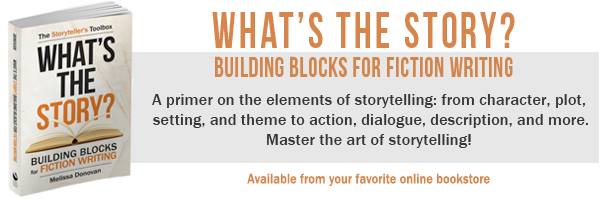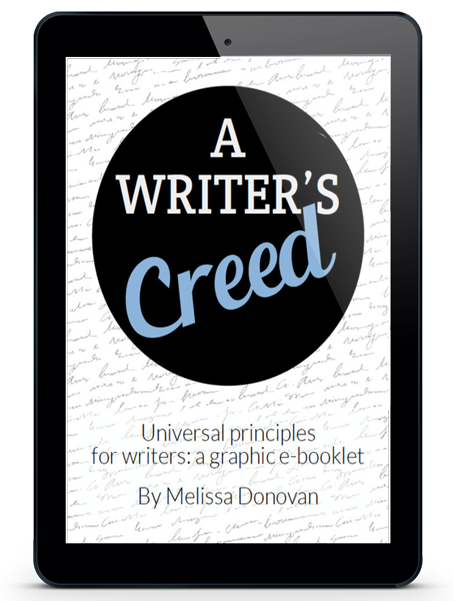Sometimes our fiction writing projects dry up. The characters turn out flat, the plot feels formulaic, and the story suddenly seems lackluster.
This is when a lot of writers give up and file their half-finished manuscripts into a bottom drawer never to be seen again.
Before giving up on a project, why not try to resurrect it? Some stories may not be salvageable, but many can be rescued with a little innovative thinking and a few fresh fiction writing ideas.
Fiction Writing Ideas
Today’s writing ideas will help you enhance stories that are suffering from a variety of maladies ranging from boring plots to unrealistic characters. Scroll through these ideas and see if your story can be renovated.
- Give your characters more than a goal. The characters’ goals are the core of almost every story. They are looking for love, trying to return home, or attempting to save the world. In addition to a goal, give your characters secrets, regrets, ulterior motives, bad memories, or any other issues that will shape their decisions as they move toward the goal. If these issues are in conflict with the characters’ goals, your story will become more dynamic.
- Deepen the plot. Most plots are actually pretty simple, but things get really interesting when you introduce subplots or make the plot richer by complicating it: the hero’s goal is to save someone she cares about, but what if she will gain something great if she doesn’t save that person?
- Breathe life into the setting. Sometimes a story’s setting is just a backdrop: Anytown, U.S.A. But you can enliven a story by giving the setting a little time in the spotlight. Any setting, from a deserted island to a major metropolis, can have personality.
- Make new character connections. Relationships often drive plot and conflict. What if two characters who barely know each other find out they share a friend (or enemy)? Build interesting relationships between all the characters in your story.
- Add a twist. Some plots plod along predictably. Give your story some zing by tying the plot up in knots. Nothing keeps readers glued to the page like plot twists and cliffhangers.
- Fine-tune the descriptions. Don’t tell us the character is staring at a wall. Show him staring at something on the wall: a crack, an ant, or peeling wallpaper. If a character is wearing blue jeans, tell us whether they’re old and faded or crisp, dark denims.
- Enhance the dialogue. Are all the characters speaking in the same voice? It’s probably your voice. Give each character distinct expressions. Maybe one character says “dude” a lot while another is constantly assigning pet names to everyone she meets.
- Push conflict to the brink. There’s a reason the hero never diffuses a bomb until one second to detonation. Get your characters so deep into conflict, readers start to believe there’s no way out. Then save the day!
- Strengthen the themes. You can plan which themes will be threaded through your story, but if you don’t, themes will emerge on their own. Identify the themes, and then strengthen them. If redemption is a theme, show a character humming “Redemption Song” by Bob Marley.
- Introduce an archetypal character. These characters stand out and feel familiar. Introduce a mentor or a trickster, or give one of your existing characters some archetypal qualities.
- Scour your favorite stories for tried-and-true fiction writing ideas. If your story hits a slump, just think about how some of the writers you admire have handled similar problems.
- Give your story greater meaning with symbols and symbolism. A white rabbit marks the beginning of an adventure, water indicates birth and rebirth, winter symbolizes death. Create your own symbols (like the mockingjay in Hunger Games) and look for objects of importance that can become symbols, such as a pen, pendant, or some iconic image.
- Dip into your characters’ backstories. They had lives before the story started. Give readers a taste of each character’s past through dialogue (in which they relate something that happened to them) and flashbacks.
- Add tension and intrigue to the plot by making a deal. One character wants something that another character has. To get it, she has to strike a deal. The higher the stakes, the more riveting the read.
- Use repetition for emphasis. Repetition works especially well with symbols. A boy gives a girl a pen when he goes away to college and says, “Don’t forget to write.” She writes, but he never writes back. For three years, she holds on to the pen and the hope that he’ll come back. Then she loses the pen. As soon as she loses it, she meets someone else. The pen makes repeat appearances, emphasizing its relevance to the story. The pen, of course, isn’t the cause of these events but provides a nice echo and works as a symbol for the greater story.
- Complicate your characters. Would a spinal surgeon have a bunch of tattoos? Probably not, which means if the spinal surgeon in your story has a bunch of tattoos, he’ll be mysterious and extra interesting. Choose personality traits and descriptions that don’t quite add up!
- Make the story emotional by killing off a significant character. Some authors have a hard time with this one, but death is part of life. In fact, it’s the one thing we can all count on. Killing a character is almost necessary when your cast is constantly facing danger of a life-threatening variety.
- Plant a red herring in your story. It confuses readers in a delightful way. It looks like the heroine will fall for the charming doctor, but it turns out the man she really loves is a con artist. Red herrings work especially well in mystery stories.
- Let your characters be affected by the events that unfold. The point of a story is to show characters experiencing something significant or meaningful, something important enough to change them. By the end, the characters should undergo attitude adjustments, adopt new philosophies, or otherwise evolve from who they were when we first met them.
- Engage readers with irony; it makes people think. The atheist experiences a miracle. A fugitive on the run gets captured because he saves someone’s life. A fire station burns down.
- Play around with the language. Most readers care more about the story, but they’ll notice if the prose is choppy or dull. Study literary devices and read a little poetry to build your vocabulary and make the best possible word choices.
- Good guys do bad things and bad guys do good things. Sure, truly evil or purely good people turn up on Earth occasionally, but really, most people are a mix of good and bad. The same should apply to your characters. Give the hero a criminal record. Show the bad guy doing something decent.
- Take a broader view. If you’re writing a murder mystery, the main character can have a love interest. If you’re writing a romance, you can throw in a few mysterious twists. Don’t be overly attached to your genre. Sprinkle a little magic on your story.
Got Any Fiction Writing Ideas?
Got any tips or ideas to add? Have you ever put a story on the chopping block and then saved it? How did you do it? What storytelling tricks do you have up your sleeve? Share your favorite fiction fixes and writing ideas by leaving a comment.






Wow, that’s a lot of useful stuff. Thank you for sharing. I enjoy your blog and look forward to your posts.
Cheers, Lee
Thanks, Lee!
I am writing a book right now, so these tips really are coming in handy!
i hope the book is good and may i know the name. im looking forward to reading it.
Wonderful ideas! I have quite a few stories that are collecting dust because I lost interest in them due to ideas running dry, maybe I can revisit them someday! These tips will also help me with a book I’m writing now, so thanks! Most of all, I really want to hop into that picture at the top… 🙂
Thanks, Bailey, I’m glad you enjoyed these ideas, and I wish you the best of luck with your book and your stories. Keep writing!
oops, i accidentally replied to you, sorry.
These are great concepts to remember!
How do you keep from getting overwhelmed with all these good ideas/points when writing a great story?
It is overwhelming sometimes, but I find that when I sit down and actually write, I don’t think about all this stuff. I just get lost in the story. There’s definitely a lot that goes into great storytelling, which is why so many writers rewrite and revise multiple times. You can also do dedicated revisions. For example, you might go through a story once just to check the dialogue, then go through it again, focusing on the themes or symbols. It’s hard work but rewarding!
That sounds very daunting to do, though I suppose it would make re-reads hold much more purpose to them. I’ve already read my story from beginning to whatever chapter I’m currently on (17) just to get caught up if I haven’t written for a while.
I always wondered how you manage all these concepts, do you make lists of symbols/intentional and unintentional plot twists etc. or do you just strongly keep these things in mind, write, and it simply flows out?
It does sound daunting. I think many of these concepts come naturally after we’ve read a lot of good books and studied the craft. So during revisions, a checklist like this helps us find the elements that are missing. For example, you might go through this list and see that your own novel already achieves 15 of these things. Of the remaining eight ideas, you might decide that four of them are not a good fit for your story. That leaves just four items to check for. Not so daunting after all!
As someone who is just getting into writing as a possible career, this site is fantastic. I check in everyday just to see what are the latest gems for me to devour. Thanks so much!!!
I’m so glad you’re enjoying Writing Forward. Thanks for sharing your feedback. It means a lot to me.
Fantastic tips! Thanks so much for this amazing list.
Thanks!
I think everyone above has covered the bases. This one is definitely getting pinned up above the desk. Thanks.
Thanks, Thomas!
Hi Melissa,
Cogent advice. Much I hadn’t thought of.
Leaves me panting for more. For instance –
Para 5 ‘Add a Twist’ . I could do with some more concrete examples of these.
Para 9 ‘Strengthen the Theme’. What’s this about Themes occurring on their own? Is it necessary to worry about Themes?
Para 10 ‘Archetypes’. Never thought of these before; what others are there?
Para 23 ‘Take a Broader View’. I wonder what else there is besides the obvious mystery element in Romance and Love Interest in Mystery?
I dunno, maybe you’ve covered this stuff elsewhere – if so, apologies – I’m new here.
I have covered some of this stuff elsewhere. For adding a twist, the best way to learn is to engage with stories and see how plot twists work. Probably one of the finest plot twists I’ve seen was in the film The Usual Suspects.
If you want your story to have a theme, then yes, it’s worth worrying about, but I wouldn’t worry until after the first draft is complete. Themes do tend to emerge on their own. Wikipedia has decent articles on themes and on archetypes. Good luck!
Sometimes I get an idea for a story and the characters run with it.
I believe writers hear the voices of their characters which help
develop the story.DOES anyone else hear voices or is it only me?
I don’t literally hear voices, but once I get going with a scene, the characters certainly take on a life of their own.
Where was this when I was banging my head on the wall trying to bring my novel’s character back to life, haha. Fantastic post with lots of good ideas that I will almost certainly use.
One trick I used to get myself interested in my character again after months of having no interest in writing about him was to do a couple of short stories outside the plot of the novel. I created something crazy and completely unrelated and used that to flesh out other traits of the character and I was suddenly excited again to write about him. Novel isn’t done yet, but it’s finally moving again.
Ah! I’ve used the same technique recently, and now I’m scratching my head wondering why I didn’t include it on this list. Thanks for adding it, Anthony.
I have a tip that’s kind of elaborate, but helped me understand the order of how important plot points should unravel:
Making a Chapter Chart by cutting up squares of paper, and titling some of them as the upcoming chapters you’ve yet to write. On the other makeshift cue cards, jot down as many important plot points your story has yet to reach in no particular order. Approaching chapters as 3 scene episodes, I move around the Idea Cards in the order that reads logically, determining what would make good chapter starters, middles and endings.
That’s a great tip! I’m actually preparing to make scene cards for my novel. I’m going to cut 3×5 note cards in half and summarize a scene on each one. Then I can lay them out and play with the order and decide which scenes to keep and which to discard. Great tip, Marlon! Thanks!
Wonderful suggestions. I am working on my very first story and your suggestions are extremely helpful. Thank you!
You’re welcome! I’m glad you found these ideas helpful. Keep writing!
I’m a new writer with a few short stories in the bottom drawer, all of them too slight, too thin…in desperate need of twists, turns and complexity. I love this list as it may mean some of those stories will live to see light.
That’s awesome! It’s fun to pull old stuff out of drawers and revitalize it. You’ll be able to revisit those pieces with the experience you’ve gained since you first wrote them. Good luck!
This is the best fiction writing page I’ve been to. It has EXACTLY what I need. THANK YOU SO MUCH! 🙂
Wow, thanks for your kind words, Annie.
A very useful list! Thank you.
You’re welcome!
I have a book in a metaphorical drawer at the moment. The story has ground to a halt. Your suggestions might just resurrect it.
Many thanks for the ideas.
Good luck! Glad this might have provided some inspiration.
Excellent List and definitely saving it – thank you! After reading this, I scribbled down a story from my past that I intend to include in my fictional work in progress, a historical fiction novel loosely based on my grandmother. Most people’s pasts have gold nuggets waiting to be mined.
You’re welcome!